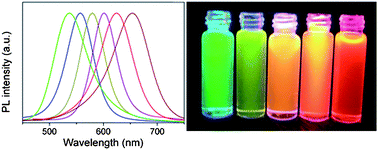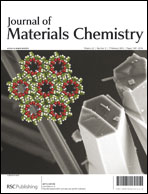In this paper, we describe a simple and efficient approach for synthesis of highly luminescent InP/ZnS core/shell quantum dots (QDs) in gas-liquid phase reaction using zinc phosphide (Zn3P2) as a new phosphorus source and indium(III) myristate as indium precursor. The effects of experimental conditions, such as the ratios of reactants, reaction temperature and overcoating time of ZnS shell, were systematically investigated. We observed that the molar ratio of In : myristic acid (MA) and the overcoating time of ZnS had significant influences on the optical properties of the InP/ZnS core/shell QDs. Under the optimal conditions, we prepared highly photoluminescent InP/ZnS QDs with emission range of 540–660 nm and the quantum yields were about 30–60%. The characterization of high-resolution transmission electron microscopy and X-ray diffraction (XRD) showed that the InP/ZnS QDs had good monodispersity and a nice crystal structure. Furthermore, we observed that the luminescence efficiency of InP/ZnS QDs was significantly improved after UV irradiation in the presence of dithiothreitol. Compared with the commonly used expensive and extremely flammable tris(trimethylsilyl)phosphine (P(TMS)3) as phosphorus precursor, Zn3P2 is a low-cost and stable phosphorus source. Our method is an easy and fast way for large-scale synthesis of highly luminescent InP/ZnS QDs for wide applications in the future.

You have access to this article
 Please wait while we load your content...
Something went wrong. Try again?
Please wait while we load your content...
Something went wrong. Try again?


 Please wait while we load your content...
Please wait while we load your content...